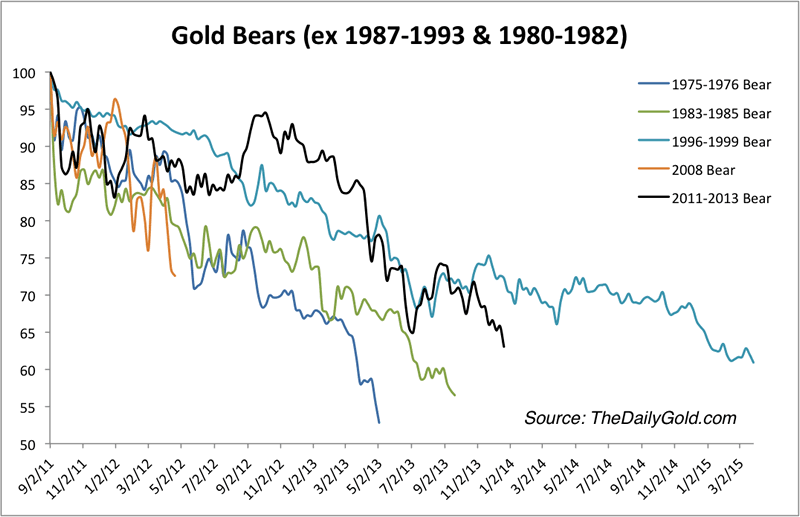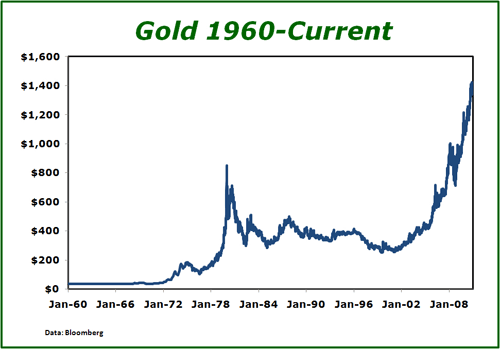Bull Market in Gold or Bear Market in Currency Markets
Post on: 29 Апрель, 2015 No Comment

It isnt that gold is not a safe haven in and of itself; it is just why are we flocking to its safety now? Last week, gold hit record highs at over $1,270 an ounce. At the same time, new economic data coming out of the U.S. signaled that the worlds largest economy is doing better than many have expected. A conundrum indeed, since stronger economic performance usually means going back to equities, not gold and other safe haven-like instruments. So, what gives?
Now there is so much speculation. One theory is that the Federal Reserve is planning to pour additional economic stimulus into the U.S. financial system by the end of this year, which means that it might be buying millions of dollars in Treasuries, a move that could spark inflationary pressures. In that context, as a natural defense against inflation, buying gold makes perfect sense.
But how can the Fed justify a monetary policy move that could potentially lead to elevated price levels, digging the U.S. governments budget deficit hole even deeper? Yet, last month, the Fed chairman Ben Bernanke said that he is open to the idea of additional monetary stimulus, especially if the outlook were to deteriorate significantly. In terms of guidance issued by a central bank, this is as specific as it will ever get. However, evidence of significant deterioration has not materialized, at least not yet.
The latest data coming out of the U.S. is that there are signs of some strengthening. In August, private employers added 67,000 new jobs. August new jobs numbers are far cry from employment numbers during boom years, although more jobs have been added than analysts have forecasted, and in the private sector at that. In addition, the U.S. Commerce Department reported that August retail sales increased 0.4%, which represented the second month of gains in the sector. Inventories also rose by a more significant one percent in July, which represented the largest gain in the retail sector in the last two years.
Yet, financial markets are not convinced that the Fed will leave the economy to its own devices. Judging by the recent performance of gold, it seems the market believes the Fed will indeed add more economic stimulus, whether there is strong evidence that it is needed or not. If more money goes into the financial systems, we could hit another six-foot brick wall — inflation — which explains why traders would be buying gold futures like there is no tomorrow.
Gold is the traditional hedge against inflation. Usually, gold bugs are the only ones screaming, Inflation, inflation! This time around, they are not the only ones in the choir. Speculation that the Fed will try quantitative easing has made currency traders particularly antsy. The speculative frenzy surrounding the Feds next monetary move has plunged the U.S. dollar against all the major world currencies, while Treasury bonds enjoyed a strong rally. Both markets are signaling that investors are betting that the Fed will lower yields on Treasuries issued in the future.

Special: An Important Message from Michael Lombardi:
I’ve identified six time-proven indicators that now all point to a stock market crash in 2015. You can see my latest video, Six Time-Proven Indicators Now All Pointing to a 2015 Stock Market Crash, which spells out why we’re headed for a crash and what you can do to protect yourself and even profit from it, when you click here now.
By the looks of it, it is not so much a case for the bull market in gold as it is for a bear market in currencies. Oh, yes, it is also about the market remaining unconvinced that the U.S. economy is recovering and fearing the worst — more economic stimulus, more debt, and inflation potentially rearing its ugly head at the most inopportune moment.














